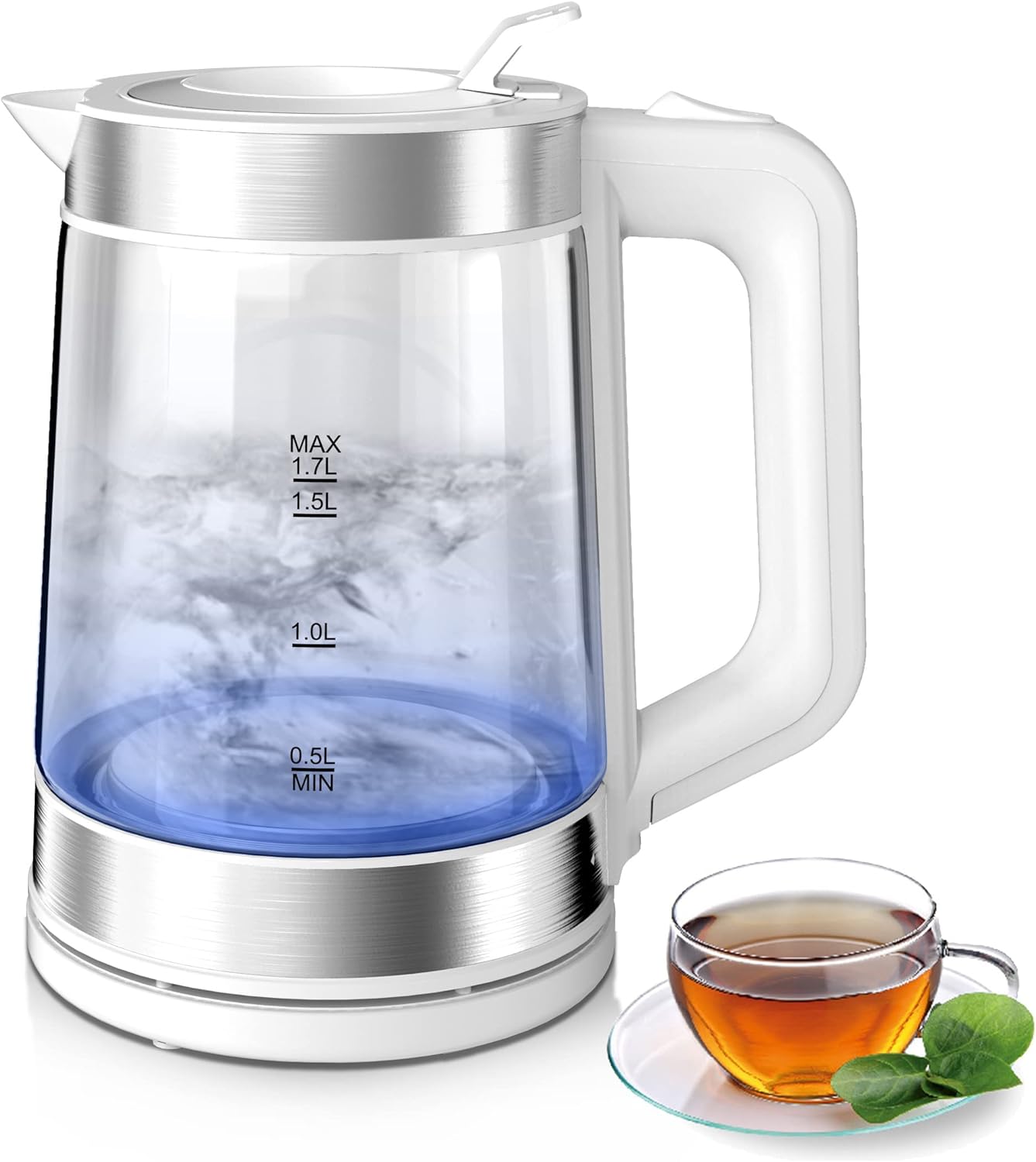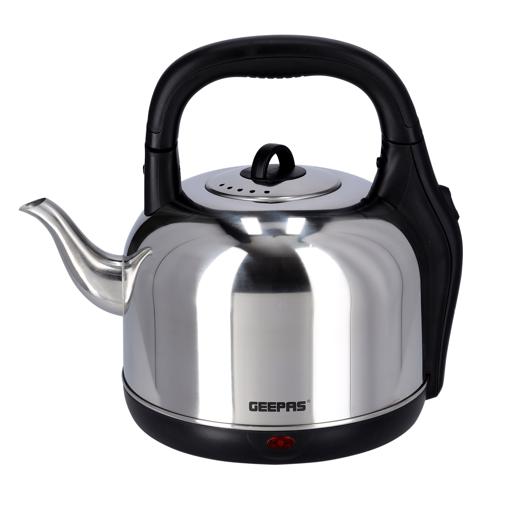Electric kettles have become a popular kitchen appliance, offering a quick and convenient way to heat water for tea, coffee, and other hot beverages. However, as with any electrical appliance, concerns about safety may arise. This comprehensive guide delves into the safety aspects of electric kettles, exploring potential hazards, safety features, and guidelines for safe usage. 
1. Understanding Potential Hazards: Identifying Risks
Before delving into the safety of electric kettles, it’s crucial to identify potential hazards that could arise during their use:
-
Overheating: If left unattended or if the thermostat malfunctions, electric kettles can overheat, potentially leading to fire hazards.
-
Electrical Shocks: Faulty wiring, damaged cords, or improper use of the kettle near water sources could pose a risk of electrical shocks.
-
Burns: Hot water from the kettle can cause severe burns if handled carelessly or if the spout design is not user-friendly.
2. Safety Features: Protecting Users from Potential Hazards
Electric kettles are designed with several safety features to minimize potential hazards and protect users:
-
Automatic Shut-off: This feature automatically turns off the kettle when the water reaches the boiling point or when the kettle is empty, preventing overheating and fire hazards.
-
Dry Boil Protection: This feature prevents the heating element from operating if there is insufficient water in the kettle, protecting the element from damage and preventing fire hazards.
-
Grounded Plugs: Electric kettles are grounded to provide a safe path for electrical current to flow, reducing the risk of electrical shocks.
-
Heat-Resistant Handles and Spouts: The handles and spouts of electric kettles are designed to be heat-resistant, minimizing the risk of burns.

3. Guidelines for Safe Usage: Ensuring Proper Operation
To maximize safety when using an electric kettle, follow these guidelines:
-
Read the Manual: Before using the kettle, carefully read the manufacturer’s instructions to understand its proper operation and safety precautions.
-
Inspect the Kettle: Before each use, inspect the kettle for any signs of damage, such as frayed cords, cracked housing, or a loose lid. If any damage is found, do not use the kettle.
-
Proper Filling: Fill the kettle with at least the minimum amount of water indicated by the water level gauge. Avoid overfilling, as water could spill during boiling.
-
Stable Placement: Place the kettle on a stable, level surface away from water sources or heat sources.
-
Unattended Operation: Never leave the kettle unattended while it is operating.
-
Handling with Care: Be cautious when handling the kettle during and after boiling to avoid burns from hot water or steam.
-
Regular Cleaning and Descaling: Clean the kettle regularly to remove limescale buildup and maintain its performance. Follow the manufacturer’s instructions for proper cleaning and descaling procedures.
4. Additional Safety Considerations: Addressing Specific Concerns
Apart from the general safety guidelines, consider these additional safety measures:
-
Avoid Using with Extension Cords: Using extension cords with electric kettles can increase the risk of overheating and electrical hazards.
-
Unplug When Not in Use: When not in use, unplug the kettle from the power outlet to eliminate any potential electrical risks.
-
Keep Out of Reach of Children: Electric kettles can pose a burn or electrical shock hazard to children. Keep them out of reach of young children.

5. Choosing a Safe Electric Kettle: Prioritizing Safety Features
When selecting an electric kettle, prioritize safety features to minimize potential risks:
-
Look for Certification: Choose a kettle that is certified by a reputable safety organization, such as UL (Underwriters Laboratories) or ETL (Intertek Testing Laboratories).
-
Consider Safety Shut-off: Ensure the kettle has an automatic shut-off feature to prevent overheating.
-
Check for Dry Boil Protection: Verify that the kettle has dry boil protection to safeguard the heating element.
-
Opt for a Grounded Plug: Choose a kettle with a grounded plug to reduce the risk of electrical shocks.
-
Select a Heat-Resistant Design: Choose a kettle with heat-resistant handles and a spout to minimize the risk of burns.
6. Maintaining Your Electric Kettle: Ensuring Safety and Longevity
Proper care and maintenance can extend the lifespan and maintain the safety of your electric kettle:
-
Regular Cleaning: Clean the kettle regularly to remove limescale buildup and prevent corrosion. Follow the manufacturer’s instructions for proper cleaning procedures.
-
Descaling: Descale the kettle periodically to remove mineral deposits that can reduce heating efficiency and clog the spout. Use a descaling solution specifically designed for kettles or follow the manufacturer’s recommended descaling method.
-
Inspect Cord and Plug: Regularly inspect the power cord and plug for signs of damage, such as fraying, cracks, or loose connections. If any damage is found, discontinue use and replace the cord or have the kettle repaired by a qualified electrician.
-
Store Properly: When not in use, store the kettle in a cool, dry place away from direct sunlight. Avoid storing the cord wrapped tightly around the base, as this can damage the cord over time.
7. Addressing Concerns About Radiation:
There have been concerns about electric kettles emitting harmful radiation. However, the level of radiation emitted by electric kettles, if any, is extremely low and falls well within the safe range for household appliances. This type of radiation is non-ionizing, meaning it does not have enough energy to damage human cells.

8. Electric Kettles vs. Stovetop Kettles: A Safety Comparison
Both electric kettles and stovetop kettles can be safe for heating water when used properly. Here’s a brief comparison of their safety aspects:
-
Electric Kettles: Generally considered safer due to features like automatic shut-off and dry boil protection, which minimize the risk of overheating and fire hazards.
-
Stovetop Kettles: Require more user attention to avoid boiling dry or overheating. They can pose a burn hazard if accidentally touched while hot.
The safest option depends on individual circumstances and preferences. Electric kettles might be a better choice for households with young children or those who prioritize convenience and automatic shut-off features.
9. Responsible Disposal of Electric Kettles:
When your electric kettle reaches the end of its lifespan, dispose of it responsibly. Do not throw it away with regular household waste. Many electronics retailers and municipalities offer electronic waste (e-waste) recycling programs. Look for designated e-waste collection points or consult your local recycling guidelines for proper disposal methods.

10. Safe and Enjoyable Hot Beverages with Electric Kettles
Electric kettles can be a safe and convenient way to enjoy your favorite hot beverages. By understanding potential hazards, prioritizing safety features when choosing a kettle, following safe usage guidelines, and maintaining your kettle properly, you can minimize risks and maximize the benefits of this versatile kitchen appliance. So, embrace the convenience of electric kettles while keeping safety at the forefront, and enjoy a steaming cup of tea, coffee, or hot chocolate with peace of mind.
-